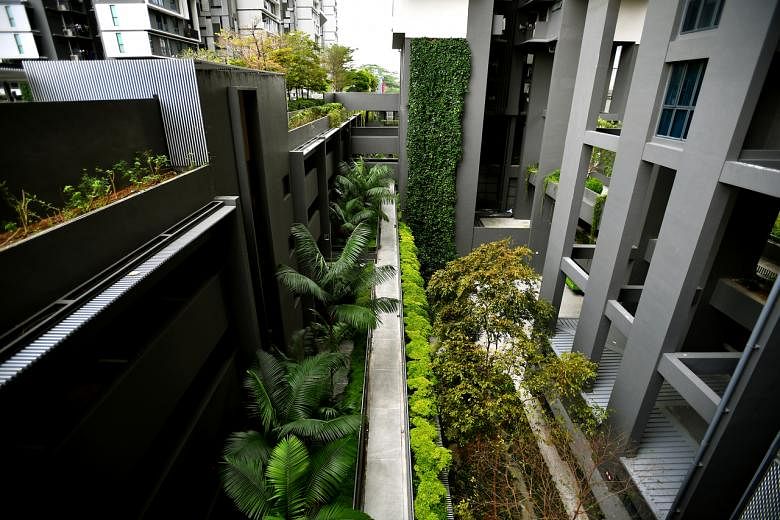SINGAPORE - A large-scale pilot involving several neighbourhoods will be conducted to see if cool paint - a new type of paint which reflects the sun's heat - can help to cool Housing Board (HDB) towns.
Data collected from the pilot - which aims to reduce ambient temperature by up to 2 deg C - will help to determine if using cool paint on building facades, roofs and pavements is effective and could be rolled out across Singapore.
This is part of a 10-year plan to make existing HDB towns more environmentally sustainable and liveable. Called the HDB Green Towns Programme, it will focus on cooling HDB towns, reducing energy consumption and recycling rainwater, said Minister for National Development Lawrence Wong on Wednesday (March 4).
"As we push the boundaries in our new towns, we will do likewise in our older ones."
The programme will bring together initiatives that have already been implemented or trialled successfully in some estates, as well as new ones with the potential for scaling up.
Mr Wong, during the debate on his ministry's budget, highlighted ways to tackle the urban heat island effect - a phenomenon in which buildings and roads release heat into their surroundings, particularly at night.
Besides the use of cool paint, greenery will also be introduced to the top decks of more multi-storey carparks to cool the surroundings. For instance, the space can be repurposed to house urban farms and community gardens.
More housing precincts will also be tapping on an urban water harvesting system to collect and store rainwater for non-potable uses. With this, the use of potable water for irrigation and washing of common areas can be cut by more than half.
To reduce energy consumption, smart LED lighting will be installed in all HDB estates. Such lighting uses motion sensors to illuminate or dim the area in a gradual manner, among other features.
Since 2014, HDB has progressively implemented this in the common areas of new build-to-order projects, such as in void decks, common corridors and stairwells. It will work with town councils to install this in all common areas of blocks built before 2014 when their existing lights are due for replacement.
Mr Wong said this type of lighting uses up to 60 per cent less energy than conventional LED lighting.
Solar panels will also be installed in more housing blocks. To date, some 5,500 or about half of housing blocks have been fitted with or identified for solar panel installations. HDB aims to increase this to 70 per cent by 2030, said Mr Wong, adding that more efficient solar panels will also be deployed.
On average, the solar energy generated by a typical HDB block is enough to meet the energy demand for common services such as lifts, lights and water pumps.
Since 2005, HDB has been driving efforts to achieve a 10 per cent reduction in annual energy consumption in HDB towns, said Mr Wong.
Through the Green Towns Programme, it hopes to reduce this by a further 15 per cent by 2030.
"This is a major effort, and the government, town councils and our residents will all need to do our part," he said. "Only then can we build greener and more sustainable HDB towns for our next generation."
Mr Wong also announced the towns earmarked for the fourth iteration of the Remaking Our Heartland programme, which aims to further develop existing HDB towns. They include Ang Mo Kio, Bukit Merah, Choa Chu Kang and Queenstown.


